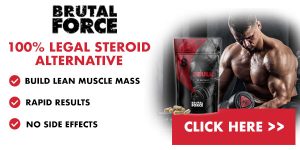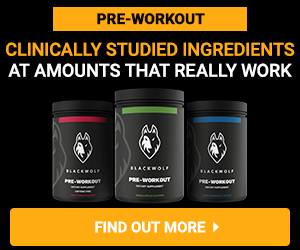Nutrition
A New Caffeine? What You Need to Know about Teacrine
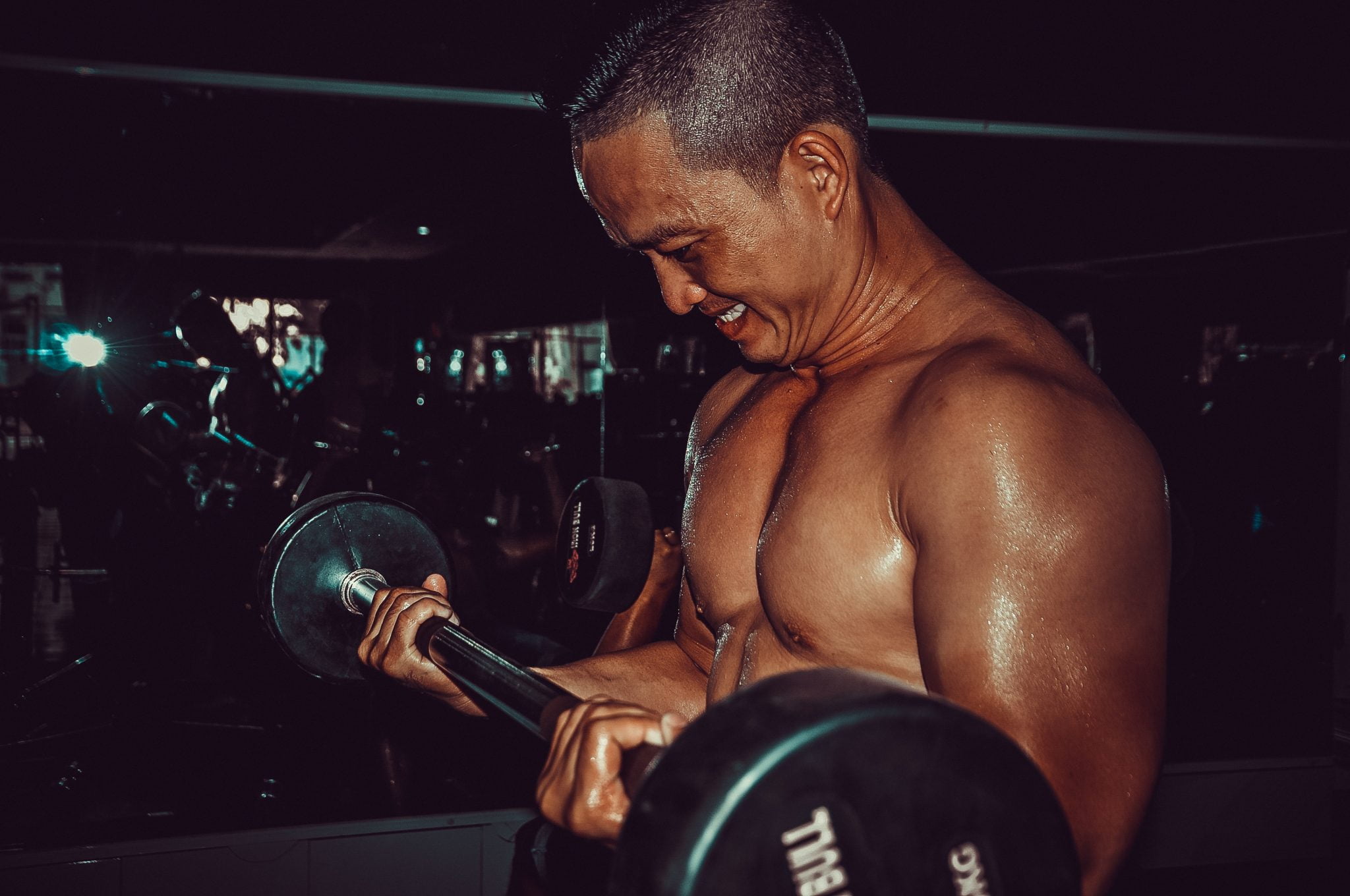
What do you know about Teacrine? This is described as a new ingredient utilized in pre-workout formulas. And there were already many types of research and studies conducted to help you understand more about this supplement and how it could help you.
Caffeine Introduced as One Of The Most Legal And Most Effective Ergogenic Aids:
Caffeine is considered one of the most legal and practical ergogenic aids. This is also believed to be the main ingredient in most pre-workout supplements that could be purchased on the market. It is just that there might be an issue with caffeine. One will also build up their tolerance.
Related Article Must Read: Caffeine
Remembering the First Day of Pre-Workout and Thinking of an Aid Training:
You may have placed the very first of your pre-workout. You slammed the door and walked into the gym. And you felt like you could do anything on the ground. It is just that you realize you are dying from an anxiety attack.
After taking the same supplement, it is like you’re feeling a little of your energy. You will need an ideal complement to help you with your training.
Read More: Increased Effect From Combining GHRP-6 With A GHRH
This could, of course, bring out the same effect as caffeine but with no habituation. You would want to have a hundredth dose to get the same feeling as the first dose. This is the time that teaching will be one important thing to consider.
What Exactly is a Teacrine?
Teacrine is described as a small molecule found in most plants. This also has the same molecular structure as caffeine. This is sourced from caffeine. Other than the plants, it is manufactured synthetically in most laboratories for sports performance, behavioral modification, and research purposes.
Read More: The Best Ways to Keep Body Fat Low during a Bulking Cycle
Because its chemical structure is the same as caffeine, it functions similarly in the body. This specific mechanism of action changes the brain’s adenosine signaling. This is precisely how caffeine works.
One more thing about it is that it impacts the dopamine level of the brain. This somehow brings minor effects, especially in improving the mood. Another exciting thing about teaching is that it looks more resistant to the development of tolerance than caffeine. The habit of drinking caffeine usually occurs in just several days.
Teacrine Fills the Role:
You must understand that you could be one hundred percent on your game, twenty-four hours a day and seven days a week. You will always need one thing to help you push yourself through hard workouts or long days.
Caffeine will get you rolling on your work until four in the morning. It will also help power you throughout your mid-afternoon slump. On the other hand, tacrine could fill this role. This will allow you to consume it without escalating your dose.
Read More: Ways to Speed Up Muscle Building Process
In a particular study conducted, it was discovered that tacrine could bring out the considerable promise of being a caffeine replacement. In a placebo study, people who consumed two hundred milligrams of tacrine experienced an even lower level of fatigue. Also, In independent research, the same findings were even shown.
Teacrine Can be Considered a Supplement for Sports Performance:
Teacrine is known to show the same effects considering fatigue in most people. This also works the same with caffeine. This only means to say that Teacrine is a great supplement when it comes to improving training.
With just 200 milligrams of teaching, it could already help reduce fatigue. Doses of 275 milligrams will already increase the time spent to exhaustion. This means to say that you could already train for an extended period.
The upper end of dosing has not yet been established. It is not yet known if consuming more will already equal more performance. Or, it could have been possible that it would just only be a waste of supplements.
Click Here to Find out the Price of Teacrine
Pairing Caffeine With Teacrine:
You need to understand that caffeine and taurine work the same way. AA published study demonstrated that tacrine consumed with caffeine increases the supplementation of tacrine and its efficiency.
Will Teacrine Kill You?
Both can still be considered legit if you train hard and go on beast mode. If you die because of consuming something crazy, you will experience the loss of your gains. Also, If you will try a new supplement in the market, it is a must to ensure its safety.
Teacrine Promises Safety:
In all these, tacrine is highly emphasized to be safe and secure. This is especially true for most hungry and young gym-goers. Scientists took sixty men during their late teens, including their early twenties.
Read More: Top 10 Legal Steroids Products and Brands on the Market
They were given three hundred milligrams of tacrine, two hundred milligrams of tacrine, and a placebo for two months. They were observed to see if something happened in their hearts, including their overall metabolism.
It was found out that nothing crazy happened, considering their glucose or blood lipids. Even their breathing was fine, and their resting heart rate was solid. Their resting blood pressure was also just fine. Teacrine indeed passed the tests with flying colors. It was undoubtedly safe so far.
Conclusion:
For that one-solid supplement to help you through a tiring and stressful afternoon, it will be a good idea to try Teacrine. This will give you a steady focus and a pep in your routine. Teacrine will be the best and most potent supplement to replace the role of caffeine.
Bodybuilding
Are Nootropics a Better Option to AAS?
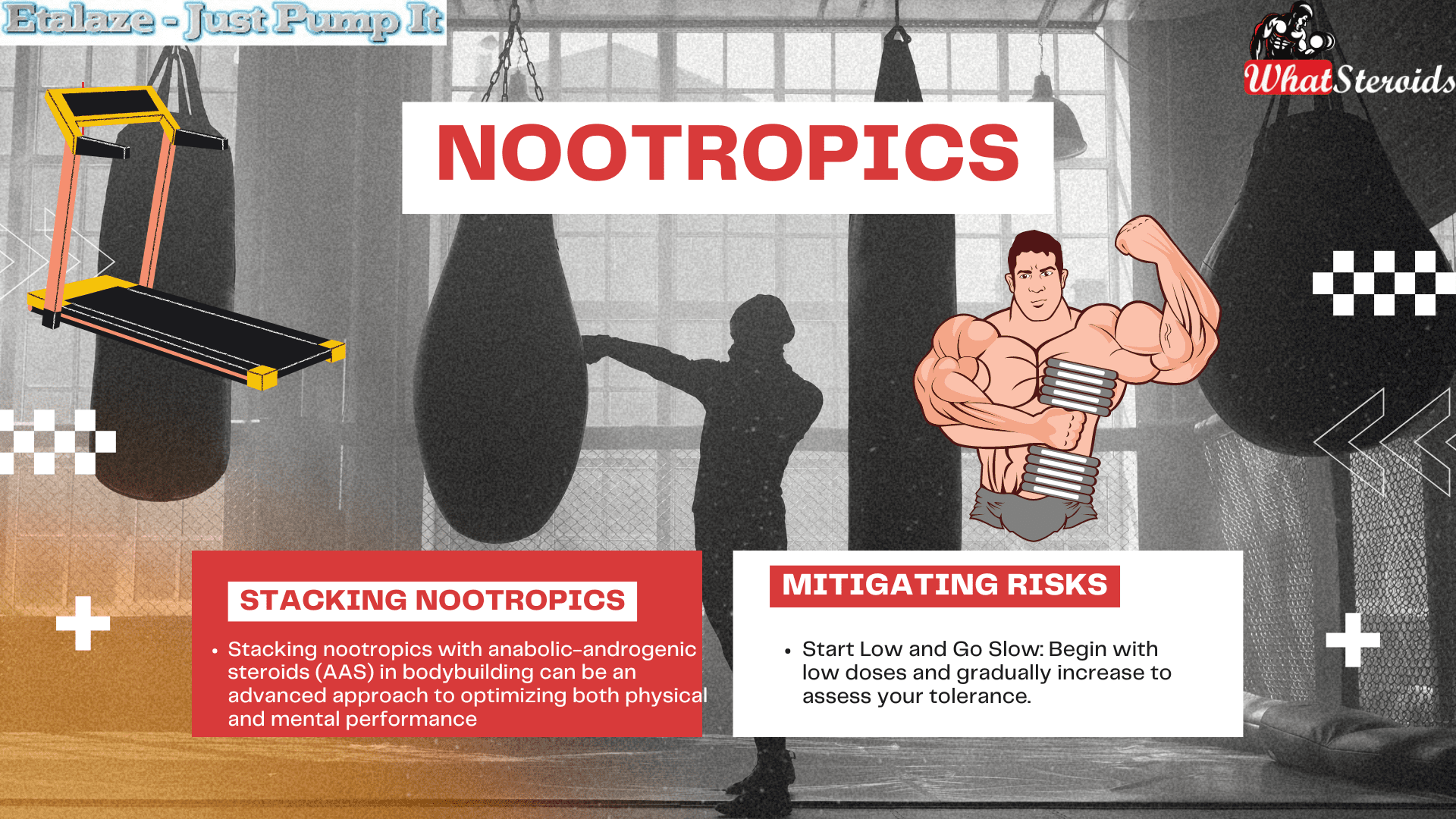
Nootropics in bodybuilding refer to supplements or substances that enhance cognitive functions such as focus, memory, motivation, and mental clarity. While traditional bodybuilding supplements focus on muscle growth, strength, and endurance, nootropics target the mental aspect of training. Improved focus and motivation can lead to better workouts, more consistent training, and ultimately better results.
Must Read: A New Caffeine? What You Need to Know about Teacrine
Here are some common nootropics used in bodybuilding:
Caffeine: Widely used for its stimulant effects, caffeine can boost energy, focus, and endurance during workouts.
L-Theanine: Often combined with caffeine, L-Theanine promotes relaxation without drowsiness, helping to balance out the jittery effects of caffeine.
Alpha-GPC: A source of choline that supports the production of acetylcholine, a neurotransmitter essential for cognitive function and muscle contraction.
Rhodiola Rosea: An adaptogen that helps reduce fatigue and improve mental resilience, making it useful for both physical and mental performance.
Bacopa Monnieri: Known for enhancing memory and reducing anxiety, Bacopa is popular for those who want to stay mentally sharp during intense training phases.
Lion’s Mane Mushroom: A natural nootropic that supports brain health, cognitive function, and reduces mental fatigue.
Phenylpiracetam: A racetam-class nootropic that is known for its stimulating effects and ability to enhance focus and mental energy, which can be beneficial during challenging workout sessions.
Stacking Nootropics With AAS
Stacking nootropics with anabolic-androgenic steroids (AAS) in bodybuilding can be an advanced approach to optimizing both physical and mental performance. Here’s a guide on how to combine these substances effectively:
Understanding the Purpose of the Stack
Combining nootropics with AAS aims to enhance not only muscle growth, strength, and recovery (which AAS focus on) but also mental aspects like focus, motivation, and mood (which nootropics address). This stack can help bodybuilders push through plateaus, manage training stress, and maintain peak performance.
Common Nootropics to Stack with AAS
Caffeine + L-Theanine: Enhances alertness and focus while reducing anxiety. Helps with energy and focus during intense workouts.
Alpha-GPC: Boosts acetylcholine levels, improving mental clarity and enhancing the mind-muscle connection.
Rhodiola Rosea: Mitigates stress and fatigue, which is crucial during heavy steroid cycles where physical and mental stress is higher.
Lion’s Mane Mushroom: Promotes cognitive health and neuroprotection, helping you stay sharp during longer cycles.
Bacopa Monnieri: Reduces anxiety and improves memory, supporting better recovery and relaxation outside the gym.
Tips for Stacking
Start with Lower Doses: If you’re new to either nootropics or AAS, start with minimal doses and gradually adjust based on how your body responds. Stacking too much too soon increases the risk of side effects.
Cycle Both Nootropics and AAS: Just like AAS, it’s wise to cycle nootropics to avoid tolerance buildup. For instance, you might use nootropics for 6-8 weeks and then take a break, aligning this cycle with your AAS cycle.
Prioritize Liver and Organ Health: Both nootropics and AAS can stress the liver and other organs. Incorporate liver support supplements like milk thistle, NAC (N-Acetyl Cysteine), and TUDCA (Tauroursodeoxycholic Acid).
Stay Hydrated and Maintain Proper Nutrition: Both nootropics and AAS can increase metabolic demands. Staying hydrated and following a nutrient-rich diet ensures better overall performance and health.
Related Article: Protein Powder Supplement Comparison – Which Type To Choose?
Sample Stack for a Cutting Phase
Nootropics: Caffeine + L-Theanine, Alpha-GPC, Rhodiola Rosea
AAS: Testosterone Propionate, Trenbolone Acetate, Anavar (Oxandrolone)
Support Supplements: Liver support (NAC, TUDCA), multivitamins, omega-3s
This stack can help maintain muscle mass, enhance focus and energy during workouts, and support mental well-being during calorie deficits.
Sample Stack for a Bulking Phase
Nootropics: Lion’s Mane, Bacopa Monnieri, Alpha-GPC
AAS: Testosterone Enanthate, Deca-Durabolin (Nandrolone Decanoate), Dianabol (Methandrostenolone)
Support Supplements: Joint support (collagen, glucosamine), digestive enzymes, liver support
This combination can boost cognitive function, improve recovery, and support the intense training needed for mass-building phases.
Stacking nootropics with AAS can offer significant benefits for bodybuilders aiming for peak mental and physical performance. However, it’s critical to approach this strategy with caution, considering the possible interactions and side effects. Always consult a healthcare professional before starting any stack, especially one involving AAS and nootropics.
Possible Side Effects Associated With Nootropics
While nootropics can enhance cognitive function, focus, and motivation, they can also cause side effects, especially when used in high doses or stacked with other supplements like anabolic-androgenic steroids (AAS). Some common side effects associated with nootropics in bodybuilding include:
1. Insomnia and Sleep Disturbances
Many nootropics, especially stimulants like caffeine, can lead to difficulties falling asleep or maintaining restful sleep. This is particularly problematic if taken late in the day, as sleep is critical for recovery and muscle growth.
2. Anxiety and Nervousness
Nootropics that stimulate the central nervous system (e.g., caffeine, phenylpiracetam) can increase anxiety, jitteriness, or nervousness, especially when combined with other stimulants or during periods of high stress.
3. Headaches
Certain nootropics, particularly racetams (like piracetam or aniracetam), can deplete choline levels in the brain, leading to headaches. Supplementing with choline sources like Alpha-GPC can help mitigate this side effect.
4. Gastrointestinal Issues
Some nootropics may cause nausea, stomach cramps, or diarrhea, especially if taken on an empty stomach or in high doses.
5. Mood Swings and Irritability
Nootropics that affect neurotransmitter levels (like dopamine or serotonin) can lead to mood swings, irritability, or even depressive symptoms if used improperly or if taken in combination with AAS, which can already impact mood.
6. Tolerance and Dependence
Frequent use of certain nootropics, particularly stimulants, can lead to tolerance, where increasing doses are needed to achieve the same effect. This can also result in dependence, where users feel they need the nootropic to function optimally.
7. Overstimulation
High doses or the wrong combination of nootropics can cause overstimulation, leading to symptoms like rapid heart rate, high blood pressure, and excessive sweating. This can be particularly risky during intense workouts.
8. Cognitive Fatigue or Brain Fog
In some cases, nootropics intended to boost focus or clarity can backfire, leading to cognitive fatigue or brain fog. This can happen due to overloading neurotransmitter pathways or poor dosing strategies.
9. Interactions with Other Supplements or Medications
Nootropics may interact with other bodybuilding supplements, medications, or AAS, leading to unexpected side effects. For example, combining stimulants like caffeine with pre-workouts or fat burners can amplify side effects like anxiety or heart palpitations.
10. Long-Term Safety Concerns
The long-term effects of many nootropics are not well-studied, especially when taken in high doses or combined with other substances. Chronic use could potentially lead to neurological imbalances or organ stress over time.
Mitigating Risks
Start Low and Go Slow: Begin with low doses and gradually increase to assess your tolerance.
Cycle Usage: Avoid using the same nootropics daily to prevent tolerance and dependence.
Stay Hydrated and Eat Well: Proper hydration and nutrition can reduce the risk of gastrointestinal and cognitive issues.
Monitor Your Response: Keep track of how you feel when taking nootropics and adjust accordingly if you notice negative side effects.
Consult a Professional: If you’re stacking nootropics with other substances like AAS, it’s essential to get medical advice to avoid harmful interactions.
While nootropics can offer cognitive and motivational benefits in bodybuilding, responsible use and monitoring are key to minimizing side effects.
Take Away
To conclude, nootropics can help bodybuilders maintain high levels of mental energy, motivation, and focus during training, which is essential for pushing through tough workouts and staying consistent with your fitness goals. However, as with any supplement, it’s important to research and consider potential side effects and interactions.
Don't Miss: Horse Chestnut and Other Supplements to Get Rid of Water Retention
Bodybuilding
How Effective is Bone Broth for Recovery?
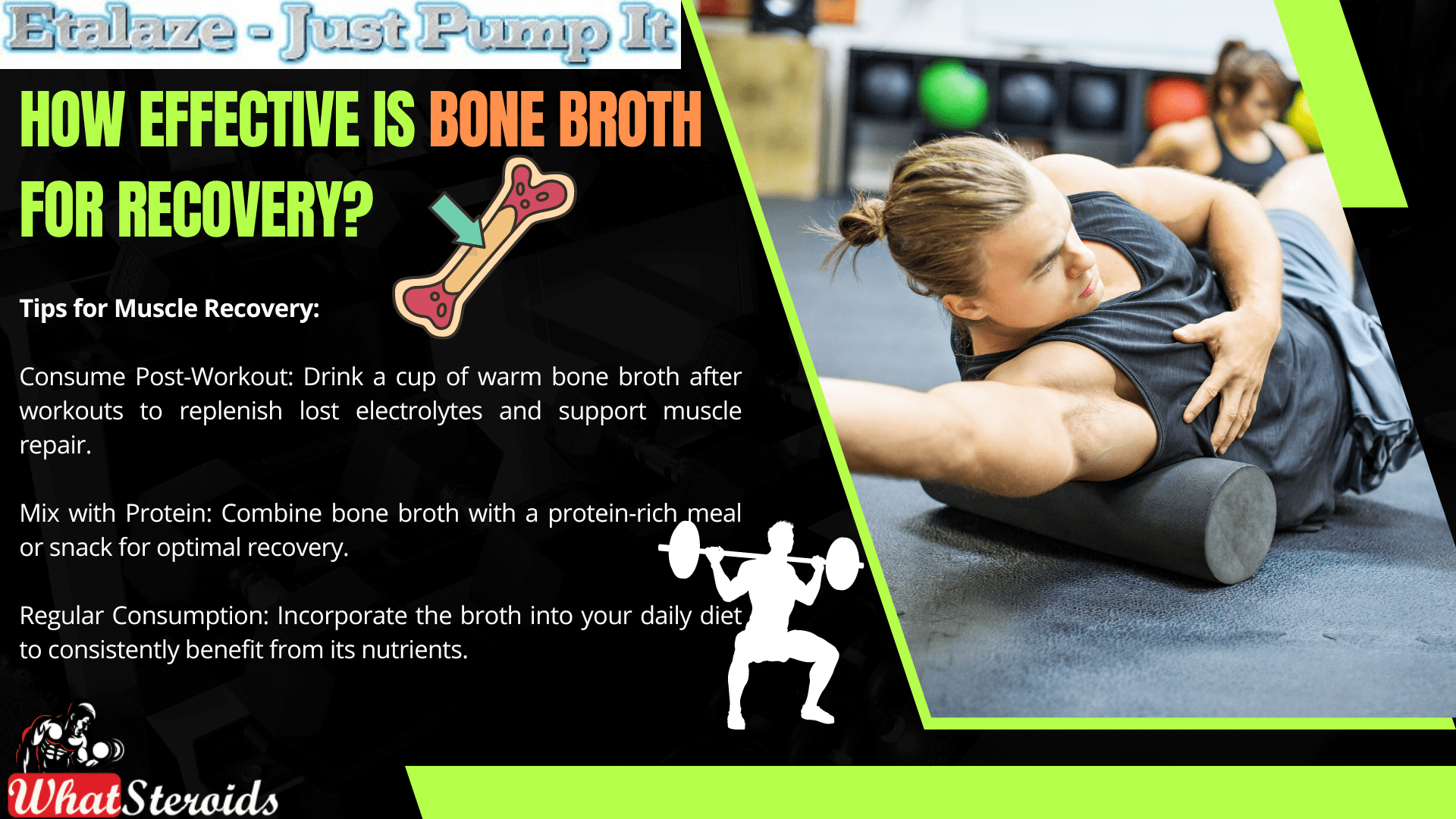
Bone broth has gained popularity in the fitness community, including among bodybuilders, due to its potential benefits for recovery. It is a nutrient-dense liquid made by simmering animal bones and connective tissues for an extended period. This process extracts a variety of beneficial compounds and nutrients. Here's how it is effective for post-workout recovery:
1. Bone Broth is Rich in Collagen and Gelatin:
Bone broth is high in collagen, a protein that supports joint, tendon, and ligament health. Gelatin, derived from collagen, may help reduce joint pain and inflammation, which is beneficial after intense workouts.
2. Amino Acid Profile:
Bone broth contains important amino acids like glycine, proline, and glutamine. These amino acids support muscle repair and growth, immune function, and gut health—all crucial for recovery.
3. Electrolytes and Hydration:
It provides electrolytes like potassium, magnesium, and calcium, which help with hydration and muscle function. Proper hydration is key to recovery and preventing cramps or muscle fatigue.
4. Mineral Content:
Bone broth is rich in essential minerals like calcium, phosphorus, and magnesium. These minerals contribute to bone health and muscle contraction, supporting recovery.
5. Anti-Inflammatory Properties:
The nutrients in the broth may help reduce inflammation, speeding up recovery and reducing soreness after workouts.
6. Supports Gut Health:
Bone broth can help heal and maintain the gut lining, which is important for nutrient absorption and overall recovery.
Must Read: Best supplements for College students
How to Prepare Bone Broth at Home
Preparing bone broth at home is straightforward and can be customized to fit your dietary needs for muscle recovery. Here’s a step-by-step guide:
Ingredients:
- Bones: Use a mix of beef, chicken, pork, or fish bones. Marrow bones, knuckles, and joints are especially rich in collagen.
- Vegetables (optional): Carrots, celery, onions, and garlic add flavor and nutrients.
- Vinegar: 1-2 tablespoons of apple cider vinegar help draw out minerals from the bones.
- Herbs and Spices (optional): Bay leaves, thyme, rosemary, and peppercorns for added flavor.
- Water: Enough to cover the bones and vegetables.
Instructions to Prepare Bone Broth
- Prepare the Bones:
- Roasting (optional but recommended): Roast the bones in the oven at 400°F (200°C) for 30-40 minutes. This enhances the flavor of the broth.
- Place Bones in a Pot:
- Transfer the bones to a large stockpot, slow cooker, or pressure cooker.
- Add Vegetables and Vinegar:
- Add your chosen vegetables and the apple cider vinegar to the pot. Vinegar is crucial as it helps extract the minerals from the bones.
- Cover with Water:
- Add enough water to cover the bones by about 2 inches. Avoid adding too much water, as it can dilute the broth.
- Cooking Time:
- Stovetop: Bring the water to a boil, then reduce the heat to a simmer. Cook for 12-24 hours. The longer you simmer, the more nutrients you extract.
- Slow Cooker: Set on low and cook for 12-24 hours.
- Pressure Cooker: Cook on high pressure for 3-4 hours.
- Skim the Foam:
- During the first hour of cooking, you might notice some foam rising to the top. Skim it off with a spoon to keep the broth clear.
- Add Herbs and Spices (optional):
- In the last hour of cooking, add any herbs or spices for flavor.
- Strain the Broth:
- Once the broth is done, strain it through a fine-mesh sieve or cheesecloth into another pot or large container to remove the bones and vegetables.
- Cool and Store:
- Let the broth cool. You can refrigerate it for up to 5 days or freeze it in portions for longer storage.
- Use the Broth:
- You can drink the broth as-is, use it as a base for soups or stews, or incorporate it into your post-workout meals.
Tips for Muscle Recovery:
Consume Post-Workout: Drink a cup of warm bone broth after workouts to replenish lost electrolytes and support muscle repair.
Mix with Protein: Combine bone broth with a protein-rich meal or snack for optimal recovery.
Regular Consumption: Incorporate the broth into your daily diet to consistently benefit from its nutrients.
Making the broth at home allows you to control the ingredients and flavor, ensuring a nutrient-rich recovery drink tailored to your needs.
Don't Miss: Chia Seeds in A Bodybuilder’s Diet: An Expert’s Advice
Incorporating Bone Broth In Your Diet
Incorporating bone broth into your bodybuilding diet can be both delicious and beneficial. Here are some creative ways to include it:
- Post-Workout Drink: Simply heat up a cup of bone broth and drink it after your workout. It’s a great way to replenish electrolytes and protein.
- Smoothies: Add a scoop of bone broth protein powder to your post-workout smoothie. It blends well with fruits and other ingredients.
- Soups and Stews: Use bone broth as a base for soups and stews. It’s an excellent way to add flavor and nutrients to your meals.
- Cooking Grains: Cook your rice, quinoa, or other grains in the broth instead of water. This enhances the flavor and nutritional content.
- Sauces and Gravies: Incorporate bone broth into sauces and gravies for added depth of flavor and health benefits.
- Marinades: Use bone broth as a base for marinades for meats and vegetables. It adds a rich flavor and helps tenderize the meat.
- Bone Broth Ice Cubes: Freeze bone broth in ice cube trays and add the cubes to your dishes as needed. This is a convenient way to add a nutritional boost to any meal.
- Bone Broth Tea: Mix bone broth with herbs and spices to create a savory tea. This can be a soothing and nutritious drink.
These methods can help you enjoy the benefits of bone broth while keeping your diet varied and interesting. Have you tried any of these methods before?
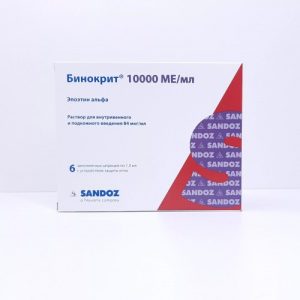 Click Here to Buy Binocrit EPO 10 000IU (6 pre-filled pens) by Sandoz
Click Here to Buy Binocrit EPO 10 000IU (6 pre-filled pens) by Sandoz
Which Animal's Bones Give the Best Broth?
Different animal bones can be used to make broth, each offering unique benefits for bodybuilding recovery. Here are some of the best options:
Beef Bones: Beef bones, especially marrow bones, knuckles, and joints, are rich in collagen and gelatin, which support joint health and muscle recovery. They also provide a deep, rich flavor and are packed with minerals like calcium and magnesium.
Chicken Bones: Chicken bones, particularly those from the feet and wings, are high in collagen and gelatin. Chicken broth is lighter in flavor but still rich in nutrients that aid in muscle repair and joint health.
Fish Bones: Fish bones, especially from oily fish like salmon, are excellent for a lighter broth that is rich in omega-3 fatty acids. These fatty acids have anti-inflammatory properties, which can help reduce muscle soreness and promote recovery.
Pork Bones: Pork bones, including the feet and hocks, are also good sources of collagen and gelatin. They produce a flavorful broth that can support joint and muscle health.
Lamb Bones: Lamb bones are another great option, providing a rich, flavorful broth that is high in collagen and minerals.
Each type of bone broth has its own unique flavor and nutritional profile, so you might want to try different ones to see which you prefer and which best supports your recovery needs.
Related Article: Essential Techniques to Master Squats Form
Overall
Can I use bone broth while on steroids? Yes, bone broth can be beneficial for bodybuilders who are using steroids or other supplements, as it provides essential nutrients that support overall health and recovery. Steroids and other performance-enhancing drugs often place additional stress on the body, particularly on the liver, kidneys, joints, and connective tissues. As mentioned, bone broth is rich in collagen, gelatin, amino acids like glycine and proline, and minerals such as calcium and magnesium, which help support joint health, reduce inflammation, and promote gut health. These benefits are especially important for bodybuilders using steroids, as these drugs can sometimes exacerbate joint pain, weaken connective tissues, or cause digestive issues.
Additionally, bone broth can help with hydration and provide electrolytes, supporting muscle function and recovery. While it shouldn't replace other key nutrients and should be used alongside a well-rounded diet and supplement regimen, bone broth can serve as a natural, nutrient-dense addition that helps mitigate some of the side effects of steroid use and enhances overall recovery and performance.
Bodybuilding
Calorie Dumping: A Bodybuilder’s Guide
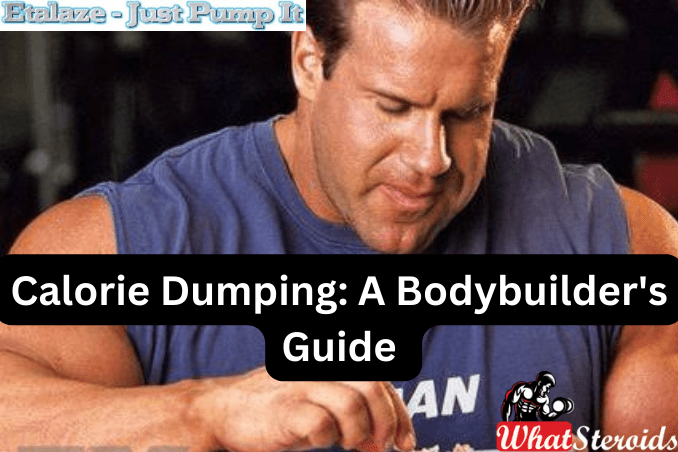
"Calorie dumping" in bodybuilding refers to a strategy where an individual consumes a large number of calories in a single meal, often following a period of low-calorie intake.
This practice is believed to support muscle growth by providing a surplus of energy and nutrients.
The idea is that after a period of restricted calorie intake, the body becomes more efficient at utilizing nutrients, making it more receptive to absorbing and utilizing the surplus calories in a short period.
However, this approach may not suit everyone and should be approached cautiously as it can lead to discomfort and potential digestive issues.
Calorie dumping, also known as refeeding or cycling calories, is sometimes preferred by bodybuilders to help prevent metabolic adaptation and aid in breaking through plateaus.
By occasionally consuming higher calorie levels, they aim to boost metabolism, replenish glycogen stores, and maintain hormone balance for better muscle growth and fat loss in the long term.
Bodybuilders focus on controlled nutrition plans to optimize muscle growth and minimize fat gain. However, occasionally, you might increase the calorie intake temporarily before an intense workout or competition to boost energy levels, but this isn't considered calorie dumping in the traditional sense.
ALSO READ: Your Guide to Become A Successful Personal Trainer
Long-term and Short-term Benefits of Calorie Dumping
Short-term benefits include replenishing glycogen stores, boosting metabolism, and providing mental relief from a strict diet.
Also known as a "refeed" or "cheat day," bodybuilders do calorie dumping for several long-term reasons:
Best Foods for Calorie Dumping
-

 Steroids2 years ago
Steroids2 years agoVOX Testing: Why Bodybuilders Must Have It Tested Regularly
-

 Steroids1 year ago
Steroids1 year agoShavers and Other Body Grooming Equipment for Bodybuilders In 2023
-

 Steroids1 year ago
Steroids1 year agoChatGPT and Other Avenues to Find Great Bodybuilding Coaches
-

 Steroids1 year ago
Steroids1 year agoBest Oil Recommendations Before Competition for Subtle Shimmer
-

 Steroids1 year ago
Steroids1 year agoPowerlifting Vs Power Building: Find Out the Big Difference and When to Shift Between the Two
-

 Nutrition1 year ago
Nutrition1 year agoEverything Nutritional Food: What’s Too Much Or Too Little
-

 Beginners1 year ago
Beginners1 year agoTren Cycle for Beginners
-

 Anabolic Steroids11 months ago
Anabolic Steroids11 months agoLegality of Anabolic Steroids In Latin America
-

 Bodybuilding Products7 months ago
Bodybuilding Products7 months agoTelmisartan In Bodybuilding: An Expert’s Advice
-

 Bodybuilding1 year ago
Bodybuilding1 year agoCompetition Prep Cycle for Pro Bodybuilders
-

 Bodybuilding9 months ago
Bodybuilding9 months agoList of FDA-Approved Peptides
-

 Anabolic Steroids5 months ago
Anabolic Steroids5 months agoHow Much Do You Know About B-AET? A Fat Burner You’ve Been Missing
-

 Bodybuilding11 months ago
Bodybuilding11 months agoChia Seeds in A Bodybuilder’s Diet: An Expert’s Advice
-

 Steroids8 months ago
Steroids8 months agoTrenbolone: Why it Remains A Beast In the Market
-

 Anabolic Steroids12 months ago
Anabolic Steroids12 months agoNatural Steroids for Bodybuilding
-

 Anabolic Steroids10 months ago
Anabolic Steroids10 months agoStart The New Year Strong With These Tips
-

 Beginners12 months ago
Beginners12 months agoCalisthenics: Secret to Building A Better Upper and Middle Body
-

 Bodybuilding10 months ago
Bodybuilding10 months agoUnique Things That Have Redefined Mr Olympia Over The Years
-
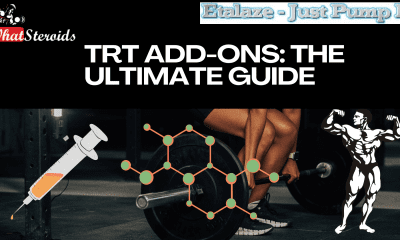
 Bodybuilding Products6 months ago
Bodybuilding Products6 months agoTRT Add-ons: The Ultimate Guide
-

 Bodybuilding7 months ago
Bodybuilding7 months agoHow Much Is Too Much Cardio? Understanding Heart Rate Zones
-
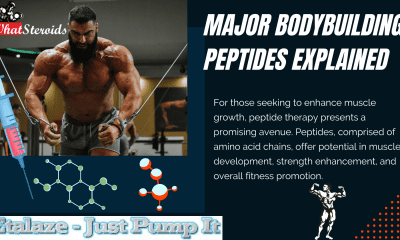
 Steroids5 months ago
Steroids5 months agoMajor Bodybuilding Peptides Explained
-

 Bodybuilding8 months ago
Bodybuilding8 months agoThe Importance of Scaptions in Female Athletes
-

 Product Reviews5 months ago
Product Reviews5 months agoTop Vitamins for Skin Health
-

 Bodybuilding5 months ago
Bodybuilding5 months agoHere Is How To know Your MRV (Maximum Recoverable Volume)
-
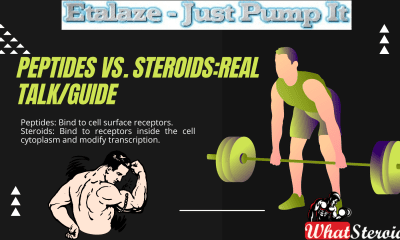
 Anabolic Steroids6 months ago
Anabolic Steroids6 months agoPeptides Vs. Steroids:Real Talk/Guide


